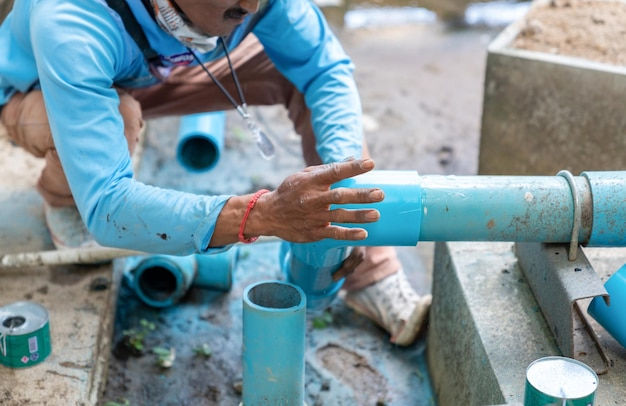The Key Benefits of Installing a Backflow Prevention System
- housespecialist
- Mar 13
- 4 min read
Updated: Mar 26

Water safety is a crucial concern for homeowners and businesses alike. Contaminated water can pose serious health risks, making it essential to have safeguards in place to maintain a clean and safe water supply. One of the most effective ways to protect your water system is by installing a backflow prevention system. This device prevents the unwanted reversal of water flow, ensuring that pollutants, chemicals, or bacteria do not enter the main water supply. By investing in a backflow prevention system, property owners can protect their drinking water, comply with local regulations, and avoid costly plumbing issues.
Protects Drinking Water Quality
A backflow prevention system is designed to keep drinking water safe from contamination. In the absence of such a system, changes in water pressure can cause dirty or non-potable water to flow backward into the clean water supply. This can introduce harmful substances such as fertilizers, pesticides, and bacteria into the water that people use for drinking, cooking, and bathing. By installing a backflow preventer, homeowners and businesses can safeguard their water from external pollutants, ensuring that it remains safe for daily use.
Prevents Plumbing System Damage
Backflow incidents can cause significant damage to a property’s plumbing system. Contaminated water entering the pipes can lead to corrosion, pipe blockages, and long-term deterioration of plumbing materials. This can result in costly repairs and potential health hazards due to leaks or broken pipes. A properly installed backflow prevention system helps maintain the integrity of the plumbing system by preventing contaminated water from flowing backward into clean water lines. This extends the lifespan of pipes and plumbing fixtures while reducing the risk of expensive repairs.
Ensures Compliance With Local Regulations
Many local governments and water authorities require properties to have a backflow prevention system installed to comply with safety standards. Failing to meet these requirements can result in fines, penalties, or even water service disruptions. Hiring a backflow preventer installation service ensures that the system is installed correctly and meets all local codes. Regular testing and maintenance may also be required to remain compliant. By staying up to date with regulations, property owners can avoid legal complications while maintaining a safe and reliable water supply.
Reduces Health Risks
One of the most serious consequences of backflow contamination is the potential health risk it poses to individuals. Exposure to bacteria, chemicals, or hazardous substances through contaminated water can lead to gastrointestinal issues, skin irritations, and other illnesses. In extreme cases, backflow contamination can result in serious waterborne diseases. Installing a backflow prevention system is a proactive measure that minimizes these risks by ensuring that only clean, potable water flows into the property’s water supply. This is particularly important for households with young children, elderly individuals, or those with weakened immune systems.
Protects Against Water Supply Disruptions
Backflow incidents can cause widespread water supply issues, affecting not just a single property but entire neighborhoods. If contaminated water enters the main supply, utility providers may need to shut off water service to multiple properties to address the problem. This can be highly inconvenient and may result in unexpected expenses. By installing a backflow prevention system, homeowners and businesses contribute to the overall stability of the community’s water infrastructure. It acts as a safeguard against widespread contamination, ensuring that water services remain uninterrupted and safe for all users.
Cost-Effective Long-Term Solution
While installing a backflow prevention system requires an initial investment, it is a cost-effective solution in the long run. The costs of repairing plumbing damage, addressing health concerns, or dealing with water contamination are significantly higher than the expense of installing a preventive device. Regular maintenance and inspections by licensed plumbers help extend the system’s lifespan, ensuring it functions efficiently for years. By prioritizing water safety now, property owners can prevent costly future damages and avoid emergency plumbing situations.
Enhances Property Value
A well-maintained and up-to-date plumbing system, including a backflow prevention system, can increase a property’s value. Prospective buyers are more likely to invest in a home or commercial property that has safety measures in place to protect the water supply. Additionally, compliance with plumbing and health regulations makes the property more attractive to buyers who want to avoid potential legal or maintenance issues. Installing a backflow prevention system is a smart investment that enhances the long-term value and marketability of a property.

Easy Maintenance and Testing
Backflow prevention systems are designed to be low-maintenance, requiring only periodic testing and inspections to ensure proper functionality. Many professional plumbing services offer routine testing to check for any issues and ensure compliance with local regulations. If any problems arise, repairs can usually be completed quickly and affordably. By scheduling regular inspections, property owners can ensure that their system remains in top condition, providing ongoing protection against backflow contamination.
Conclusion
A backflow prevention system is an essential safeguard for maintaining a clean and safe water supply. It prevents contamination, protects plumbing systems, ensures regulatory compliance, and reduces health risks. By investing in a backflow preventer, property owners can avoid costly plumbing issues, enhance their property value, and contribute to a safer community water supply. With proper installation and routine maintenance, a backflow prevention system provides long-term protection and peace of mind, ensuring that water remains safe for everyday use.



Comments